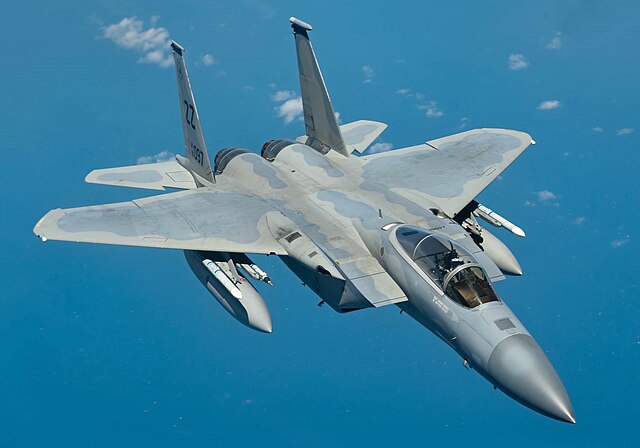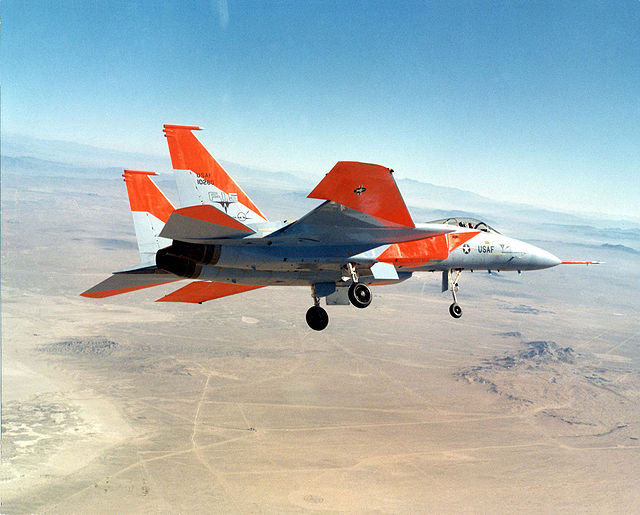1983 Negev mid-air collision
In May 1983, two Israeli Air Force aircraft, an F-15 Eagle and an A-4 Skyhawk, collided in mid-air during a training exercise over the Negev region, in Israel. Notably, the F-15,, managed to land safely at a nearby airbase, despite having its right wing almost completely sheared off in the collision. The lifting body properties of the F-15, together with its overabundant engine thrust, allowed the pilot to achieve this unique feat.
The Israeli Air Force F-15D Baz '957' involved in the incident, seen here in 2011
An Israeli Air Force A-4 Skyhawk similar to the one involved
McDonnell Douglas F-15 Eagle
The McDonnell Douglas F-15 Eagle is an American twin-engine, all-weather tactical fighter aircraft designed by McDonnell Douglas. Following reviews of proposals, the United States Air Force (USAF) selected McDonnell Douglas's design in 1969 to meet the service's need for a dedicated air superiority fighter. The Eagle first flew in July 1972, and entered service in 1976. It is among the most successful modern fighters, with over 100 victories and no losses in aerial combat, with the majority of the kills by the Israeli Air Force.
McDonnell Douglas F-15 Eagle
Test facility craftsman Jack Culpepper adjusts a model of the F-15 Eagle before it undergoes aerodynamic testing in the mid-1970s in the 4-foot transonic wind tunnel at Arnold Air Force Base, Tennessee
McDonnell Douglas F-15A (S/N 71-0280) during the type's first flight
F-15A cockpit






